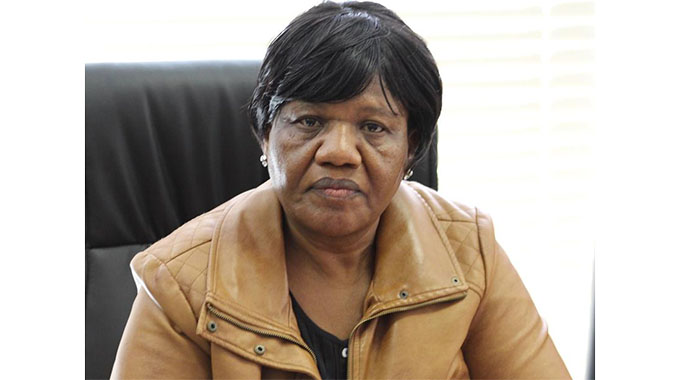US$1,5bn steel plant ready by June

Oliver Kazunga
Senior Business Reporter
THE US$1,5 billion steel plant completed recently in Manhize near Mvuma is expected to commence operations by June this year and has started mobilising raw materials to the plant with over 50 000 tonnes of stockpiles of coking coal now on site.
Dinson Iron and Steel Company (Disco), one of the three local subsidiaries of the Tsingshan Holdings Group Limited, a Chinese stainless steel producer, built the plant, anticipated to be a game changer for the local engineering, iron, and steel sector once it starts operating.
The project is also expected to go a long way in reducing the cost of raw materials in sectors such as construction that heavily depend on steel in the development of infrastructure.
According to the Engineering Iron and Steel Association of Zimbabwe (EISAZ), since the closure of Zisco in 2008 at the height of hyperinflation, Zimbabwe has been spending US$1 billion worth of steel and related product imports annually from countries such as South Africa, India and China.
At its peak in the late 1990s, Zisco produced over one million tonnes of steel annually employing more than 5 000 people directly.
EISAZ is also on record saying Zimbabwe consumes 1,5 million tonnes of steel per annum.
The Manhize steel project is touted to be Africa’s largest integrated steel plant and adds impetus to the Government’s aspirations of leaving no-one and no place behind in economic growth and development as Zimbabwe seeks to attain an upper middle-income society by 2030.
In an interview during a tour of the steelworks project by this publication on Tuesday, Disco public relations manager Mr Joseph Shoko said iron ore, one of the major raw materials in steel production, was already being mined and crushed at the company’s mine situated seven kilometres west of the plant.
Limestone, another significant raw material in steel manufacturing, is in the process of being extracted at Disco’s mine in Masvingo.
“We have stockpiled over 50 000 tonnes of coking coal from Hwange and we continue to transport the coal from Hwange; seven kilometres from the plant due west is where we are mining ore and we have started the mining there and also crushing has started, what is left is just transporting the ore from the mine to here.
“We are also in the process of extracting the limestone in Masvingo and anytime soon we will start limestone mining. By the time of commissioning everything will be in place,” he said.
The steel plant is expected to produce 600 000 tonnes of products in the first phase, rising to 1,2 million tonnes in the second phase.
In the early stages of production, the Dinson steel project, which presently employs 1 500 people, plans to produce pig iron followed by steel billets and steel bars before the end of this year.
By the time the plant starts production, more than 2 500 people will be employed directly.
Production is anticipated to rise to 3,2 million tonnes in the third phase and ultimately five million tonnes annually in the final phase, supplying a wide range of steel products to the Zimbabwean industry with direct employment figures at the steel plant reaching 10 000.
Net revenues are expected to be US$10 million during the first phase before rising to US$4,25 billion under phase four of production.
“When production commences, we will start with the billets but in October definitely we should be able to produce steel bars and before we start exporting, we want to satisfy local demand as you are aware that we import 80 percent of our steel from outside countries.
“Therefore, our objective is to first of all satisfy local demand which is already guaranteed because we don’t have any other industry that is producing the steel that we want to produce here.
“Already we have received a lot of inquiries in the SADC region, countries like DRC (Democratic Republic of Congo), Zambia, Malawi all those countries have made inquiries they want to know when exactly we are going to start production.
“Definitely after we have satisfied the local market, we will also focus on our Sadc countries because we want to make sure that the region has enough supply of steel,” he said.
So far, Mr Shoko said it is only Dinson and ArcelorMittal in South Africa that has been doing steel production in the Sadc region and all countries in the region have been ordering steel from South Africa.
“If you look at the quantities that we require here in Zimbabwe, obviously we require anything around 400 000 to 500 000 tonnes of steel annually and that size is almost as good as the demand that might be required by other countries that are within the region.
“We intend to end up having more than six blast furnaces and with only two blast furnaces, we (can) produce more than 1,2 million tonnes annually and we are confident that we are going to be able to supply the steel that is wanted by all the countries that require them in Africa,” he said. Following the closure of Zisco, once the largest integrated steelworks north of Limpopo, at the height of the hyperinflation era in 2008, the country has largely been spending millions of dollars importing steel.
Mr Shoko said a lot of ground has so far been covered about the completion of the Manhize steel plant.
“Starting with our main workshop which is quite huge covering about 3,5 hectares, where we do a lot of fabrication, one is finished, it’s already in use and 100 percent operational.
“Most of the steel that we have been using here requires fabrication. The fabrication was done in that workshop and it’s working.
“The sintering plant is now complete, the sintering plant which is the major first part of the whole process where most of these raw materials start to be crushed and mixed up,” he said.
“The blast furnace itself is 99 percent complete.
“We also have the rolling steel ground which is under construction now it’s also almost 95 percent complete and a power plant that is complete.”
The commencement of operations under the first phase of the steel plant is a result of the Second Republic’s creation of a favourable investment climate.
The scheduled opening of the project moves Zimbabwe into a good position to become a major steel manufacturing giant, expanding the mining industry as all raw materials are mined locally, the iron ore very close to Manhize, and creating thousands of new jobs at the expanding steelworks and in downstream heavy industry with the local industrialist tapping steel locally.
Mr Shoko said in terms of construction of a transmission power line from Sherwood in Kwekwe to Manhize, the project was now 80 percent towards completion and Dinson expects the 88KV line would be complete by the end of next month.
“We have gone over 80 percent and we are hoping to complete the line by the end of April and we will be having the 88Kv from Kwekwe to here. Once that is in place, it means we can now commission the plant and we expect that commissioning will be anytime between May and June,” he said.











Comments